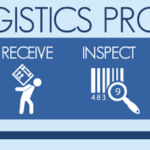Evaluate Your Total Cost of Installation to Increase Profits
By John Cox
National Accounts
Technical Transportation, Inc
If you’re like many manufacturers, the fulfillment and logistics processes to deliver products to your customers can be complex and consist of many moving parts.
You may have several providers for transportation, one for transit from your shipping dock to your customers’ destination location, one for final-mile delivery, and yet another for setup and installation. That’s not to mention who performs your training and field service calls.
With all of these disparate providers, it is difficult nailing down your total cost of transportation/ installation for your products, and thus you might find it hard to accurately determine if your logistics spend is truly efficient and within budget parameters.
So what exactly is total cost of installation? We simply define it as the cost of the logistics processes required for you to get your product to your end-user. This is the typical routine:
- Product is ordered
- Shipped
- Delivered to site
- Set up and installed
- End-user training conducted
- Product is ready for customer to use it for intended purpose(s)
All for One, One for All
Traditionally, these have all been viewed as separate processes that require a different provider resource for each.
In today’s world, though, that’s like going to McDonalds to get a hamburger, Burger King to get your fries and Sonic to get your drink, instead of going to Whataburger to get a combo meal in one location, for a better price, better quality (we’re from Texas and are biased here), all while saving you time and headaches.
The good news is, you can do the same with your logistics by optimizing your fulfillment costs and processes, meaning you look at the processes stated above as steps in a single process that can be handled by a single provider. It’s a combo deal rather than a la carte.
Consolidating to a single service provider allows you to:
- Cut down on administrative management of multiple vendors
- Increase response times internally
- Increase internal efficiencies
- Decrease overlap, redundancies and break down of communications
- Minimize the need for field service engineers (FSEs) for service calls (that exceed costs beyond $1,000/day)
- Minimize overall disruption to your end-user and their daily activities
- Eliminate delays while waiting for one vendor to hand off services to another
One word of advice, though, when looking for a single vendor—some will seem like they offer bargain prices on their core services, but then they’ll hit you for extra fees on common services that are necessary for you to fulfill your products and get them into your customers hands. So do your homework!
Need Help?
If you are stuck in a quagmire of logistics processes and vendors, or have questions about how you can improve the efficiency and effectiveness of your supply chain operations, we’re happy to help—no strings attached. Just click here to submit your question today.



